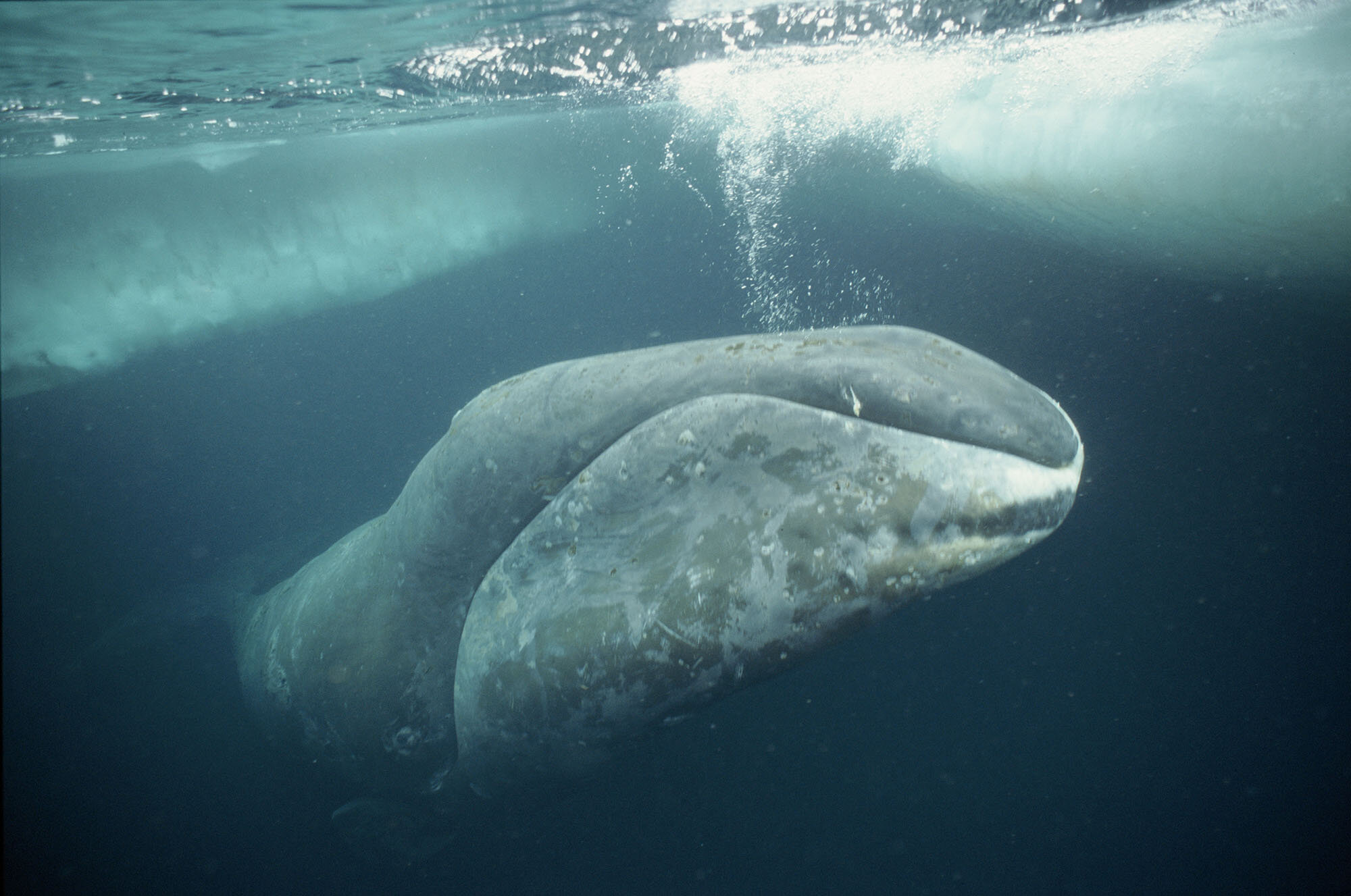Pollution with an easy solution: Regulating underwater noise pollution for a healthy Arctic Ocean
naturepl.com / Martha Holmes / WWF
When we think about threats to whales, seals and walrus in the Arctic, we don’t immediately think of underwater noise pollution. More likely, our minds go to visions of melting ice, caused by the region’s biggest threat: the climate crisis. Sea ice is essential habitat for many Arctic species, and it is also incredibly important in shaping the underwater soundscape that marine animals use to navigate, find food and mates, and avoid danger.
There is growing evidence that one of the world’s quietest oceans, full of natural sounds, is increasingly being polluted with man-made noise from ships, construction, oil and gas exploration and other activities. This growing racket threatens the balance of Arctic marine ecosystems and the cultures and livelihoods of Arctic Indigenous and coastal communities, who depend on a healthy ocean.
To convey the urgent need for action by Arctic countries WWF asked our supporters in 2019 to sign a petition, which we then presented to the Arctic Council at their Ministerial Meeting. The petition, together with subsequent work at the Arctic Council, has raised the profile and priority of this important issue. In the past two years there has been substantial progress in our understanding of the scope of the problem and the unique nature of underwater noise in the Arctic.
A recent report by the Arctic Council outlines that the number of ships entering Arctic waters grew by 25 per cent between 2013 and 2019, while the distance sailed jumped by 75 per cent. Because sound travels long distances at shallow depths in the Arctic compared to temperate oceans, even a small increase in shipping can have a disproportionate effect on underwater noise levels. Sea ice loss is expected to continue due to climate change, which means the natural physical barrier to shipping and other industrial development is disappearing from the Arctic Ocean.
WWF, the Government of Canada and the German Environment Agency are co-leading an Arctic Council project that will tell us where the noisy and quiet areas of the Arctic Ocean are, how underwater noise levels from shipping have changed since 2013, and how underwater noise might be affecting marine life. This important research is nearly complete and will provide a jumping off point for Arctic countries to identify where monitoring and management is needed. It will also equip them with knowledge to share with the United Nations global shipping regulator - the International Maritime Organization (IMO) - in summer 2021, to highlight the need for better management of underwater noise across the world’s oceans.
There are still knowledge gaps about the effects of underwater noise on wildlife that need to be filled. To this end, WWF is supporting new research off the coasts of Greenland, Canada and Russia in locations important for marine mammals. In the Canadian Arctic, a new study shows stress levels are as much as 200 per cent higher in narwhal exposed to shipping. Outside the Arctic, we continue to learn more. In 2020, over 100 new scientific papers were published on underwater noise and scientists continue to sound the alarm about the impacts of underwater noise on the health of the world’s oceans.
In just a few years, our knowledge on underwater noise in the Arctic has expanded greatly and we are encouraged that several Arctic countries have committed to continuing this work in 2021. But there is an urgent need for Arctic countries to take steps beyond research to manage underwater noise pollution and work together to support more effective global regulation.
WWF encourages Arctic countries to act fast to safeguard the Arctic’s unique marine life from the damaging effects of underwater noise - from mussels and fishes up to whales, seals and walrus. We all depend on healthy oceans full of natural sound.


